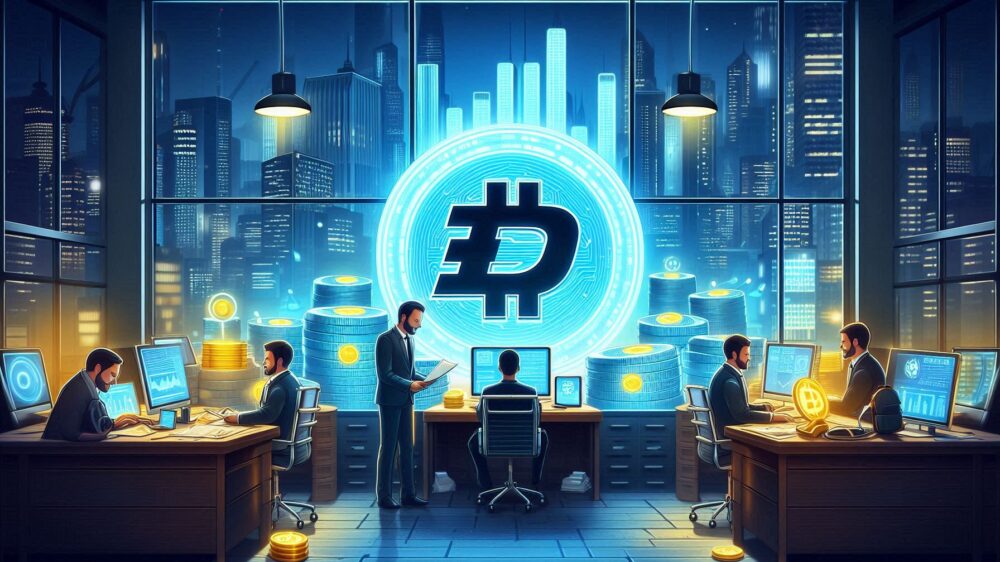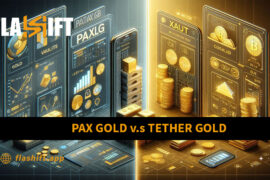Dash’s Role in Decentralized Finance | Let’s take a step back to 2014, when Bitcoin started to make the headlines and other cryptocurrencies were slowly emerging. Among all this chaos, a small project named “Xcoin” was quickly taking shape, and quite frankly, only a few people noticed it at first. However, after a quick rebranding to “Darkcoin” because of its strict privacy features and then again to a more compelling name, “Dash,” it was finally able to turn heads.
Let’s fast-forward to today when Dash has become an inseparable, vital part of the Decentralized Finance (DeFi) ecosystem. But how did Dash get this far? What is Dash’s role in DeFi, and why are traders, developers, and enthusiasts so excited about its potential?
In today’s article, we will examine Dash’s incredible journey, from its not-so-successful start to its vital role in shaping DeFi’s ever-evolving landscape. So, without further ado, let’s get into it.
For exchange cryptocurrency at the best rate, visit Flashift website, create a registration-free transaction and take advantage of a secure and speedy experience.
The Basics You Should Know about Dash Decentralized Finance
First, let’s start with a little history lecture! Created in 2014 by Evan Duffield, Dash’s story is a tale of adaptation. Originally launched as “Xcoin,” Dash was designed to address the limitations of Bitcoin, including speed, transaction costs, and privacy. It quickly upgraded by focusing on anonymity and became more popular with that feature. However, the project didn’t stop there! The creator saw a higher potential for this project, making Dash the go-to cash for everyday use, rebranding it to “Digital Cash,”_ hence the name “Dash.”
Unlike Bitcoin, which is slow and expensive, especially in smaller transactions, Dash is an excellent option for everyday use and payments. But here’s the catch_ It didn’t stop there! Dash is a community-driven cryptocurrency that lets its users vote on important decisions. Additionally, it has a special fund that helps pay for updates and improvements. Its transactions are speedy, making it even more convenient for daily use. All these features have turned Dash into more than just a payment tool. Today, Dash stands as a bridge between traditional finance and the decentralized world.
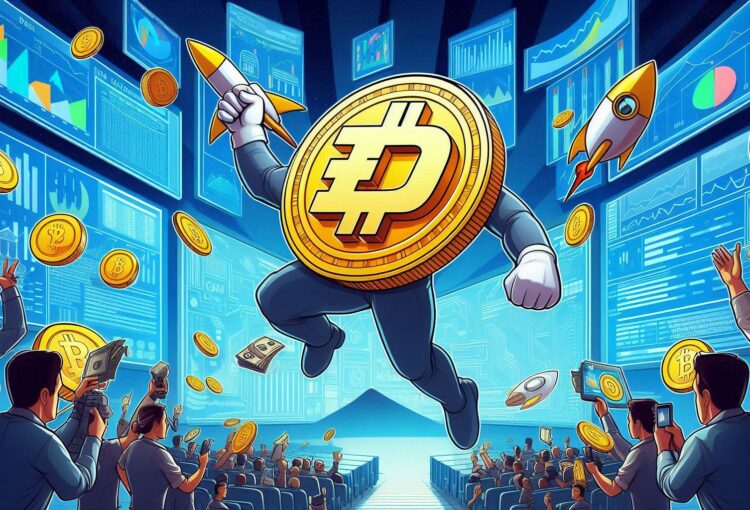
What makes Dash stand out in DeFi?
At first glance, Dash might look like any other cryptocurrency, so why is it so good for DeFi?
- Fast transactions: In the Decentralized Finance ecosystem, everything is about speed! In fact, many of the DeFi protocols, like decentralized exchanges (DEXs) and lending platforms, require fast transactions. This highlights the role of Dash in Decentralized Finance because it allows transactions to be confirmed almost instantly.
- High-security: Dash uses a special security mechanism called “ChainLocks.” ChainLocks enables transactions to be confirmed and secured as soon as the block has been processed rather than waiting for six other blocks to be signed first. This makes it nearly impossible for miners to cause chain reorganizations or blocks and protects Dash’s network from attacks, making it one of the most secure blockchains for DeFi.
- Low fees: High transaction fees can cause serious problems in the world of Decentralized Finance, especially for those who make smaller transactions or interact with DeFi protocols more frequently. Dash has lower transaction fees, which makes it a great fit for DeFi. It can be a big advantage for small investors and large traders by ensuring that fees don’t eat up their returns in lending, borrowing, and trading.
- User-Friendly: Many DeFi platforms are overwhelming for new users. Setting up a wallet, learning about smart contracts, and handling decentralized exchanges can be exhausting and make one question their decision to enter the blockchain world. However, Dash has completely changed the landscape of Decentralized Finance. It’s constantly trying to make cryptocurrencies more accessible to everyday users. Dash Evolution helps users manage their cryptocurrency using a simple and easy-to-understand app. They can send money instantly and access various DeFi services without knowing much about its technicalities. Dash is about making crypto finance feel as easy and understandable as using a traditional banking app without the downsides_ of high fees and intermediaries.
- Privacy: Dash also provides a layer of privacy protection called PrivateSend. This feature can be used for sensitive financial activities and private transactions. It allows you to mix your Dash transactions with others, hiding details from others. This can make Dash a fantastic option for users who want to remain private while interacting on the blockchain.
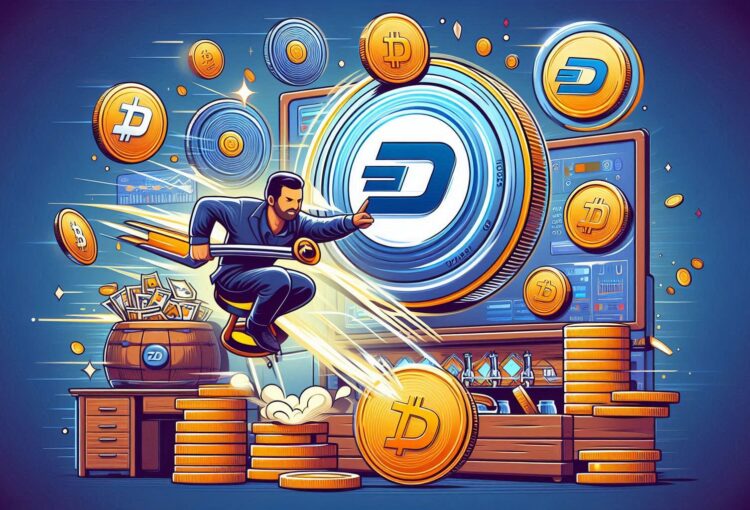
Dash and global financial services
Now, close your eyes and picture this:
You live in a country with an unstable national currency and strict transaction rules that make sending money to anyone abroad practically impossible.
In this situation, Dash isn’t just a digital currency; it’s so much more than that. Millions of people all around the world are experiencing the exact same situation, and a borderless, fast, and easy-to-use currency with low transaction fees can be the perfect tool for them.
Dash in Action: How Can I Use Dash?
After coming this far, you might wonder: okay, that’s pretty nice, but where and how can I benefit from that? So, now it’s time to take a closer look at some of the critical cases you can use Dash to make things a lot more convenient:
Lending and Borrowing with Dash
DeFi platforms allow taking out loans or lending money peer-to-peer on the blockchain. Dash can also be used to lend and borrow money in Dash decentralized finance; it will enable you to borrow stablecoins and other assets. Dash’s speed and low fees make the borrowing and lending process fast and efficient.
Yield Farming and Staking Dash
Lately, yield farming has become one of the hottest trends in DeFi. In this investment strategy, the investor stakes lends, borrows, or locks crypto assets on a decentralized finance platform to earn a higher return. In this method, users can receive payment of the return in additional cryptocurrency and earn rewards by providing liquidity to decentralized protocols. You have probably already guessed Dash’s role in Decentralized Finance in this scenario! Using Dash; you can stake your coins and earn interest over time while avoiding high fees. It doesn’t matter whether you’re staking Dash directly or using it in DeFi farming strategies; in any of these cases, you can earn more money than what you’ve invested.
Decentralized Exchanges (DEXs)
Decentralized exchanges allow users to exchange cryptocurrencies directly with each other without the need for a mediator. Dash provides this option for its users. Its transactions are also fast and cheap, allowing users to make instant trades at lower costs. This can make Dash’s role extremely vital and important for anyone trading on decentralized platforms.
Dash Decentralized Finance; Dash’s Role in Shaping the Future of DeFi
Many investors and analysts believe that Dash is going to revolutionize DeFi. Its unbreakable focus on adapting and integrating with emerging decentralized financial systems and prioritizing scalability, user experience, security, privacy, and speed will increase its adoption across the DeFi space even more.
For example, Dash has taken an innovative approach to contributing to DeFi by providing a governance model. This structure ensures that Dash remains agile and community-driven, giving it the upper hand compared to the other DeFi platforms. But how?
At the core of this governance structure, the Dash DAO (Decentralized Autonomous Organization) operates through a network of master nodes that vote on proposals to allocate funds from Dash’s self-sustaining treasury. This enables continuous development based on the community’s choices and votes.
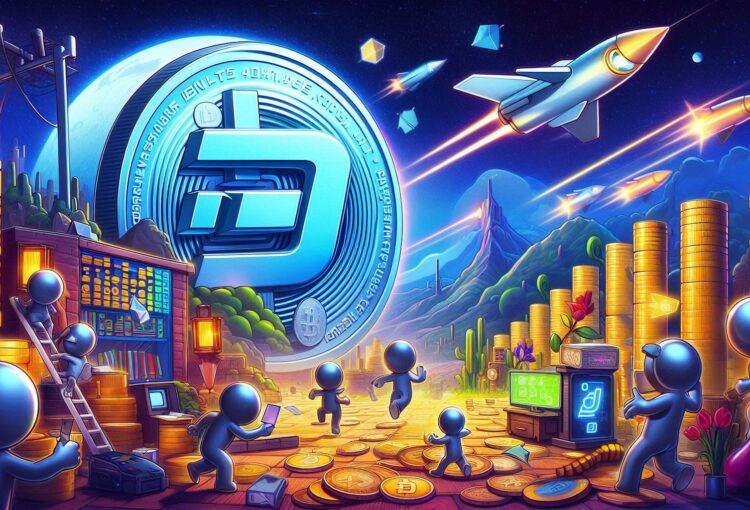
Can Dash Compete in the Overcrowded Market?
Now, the real question is, are all these innovations enough? Can they enable Dash to continue thriving in an overly competitive market?
As you know, the DeFi market is filled with projects that offer innovative features and a larger ecosystem. Options like Ethereum and Solana can dominate the digital market, leaving no room for projects like Dash. Additionally, Dash focuses extensively on privacy features, so balancing its privacy roots with compliance is hard.
However, its community-driven governance, global adoption, innovation, adaptability, focus on solving real-world problems, and efforts to get more people to use cryptocurrencies give it a strong advantage in this fight to survive and outshine other projects. Dash could remain a vital player in the evolving DeFi landscape by continuing to innovate and adapt.
Final Thoughts
Dash Decentralized Finance (DeFi) gives users higher transaction speed, lower fees, and outstanding privacy. These three factors make a project stand out in the decentralized financial space. That is why whether you’re lending, borrowing, staking, or simply trading, Dash is shaping the way people interact with decentralized finance.
So, the next time you hear someone talking about DeFi, you’ll know precisely why Dash has an undeniable role in the revolution of the decentralized finance world.
FAQ
1. How does Dash’s governance model differ from that of Bitcoin?
Dash employs a community-driven governance model, allowing users to vote on significant decisions and fund updates through a special treasury system.
2. What is the “ChainLocks” feature in Dash?
ChainLocks is a security mechanism in Dash that confirms and secures transactions as soon as a block is processed, preventing chain reorganizations and enhancing network security.
3. Why are low transaction fees important in DeFi, and how does Dash address this?
High fees can deter small investors and frequent users in DeFi. Dash offers low transaction fees, making it cost-effective for both small and large participants.
4. How does Dash facilitate cross-border transactions?
Dash enables fast and inexpensive international settlements, making it an efficient option for cross-border transfers.
5. What industries benefit most from using Dash for global trade?
Industries such as e-commerce, remittances, and exports benefit from Dash due to reduced fees and transaction delays.
6. How does Dash’s community-driven approach impact its development?
Dash’s community-driven model allows stakeholders to vote on project proposals, fostering engagement and funding initiatives that advance the network’s technology, marketing, and business development.


